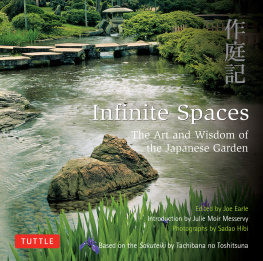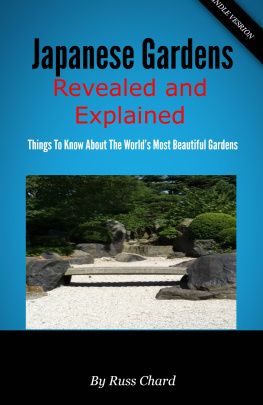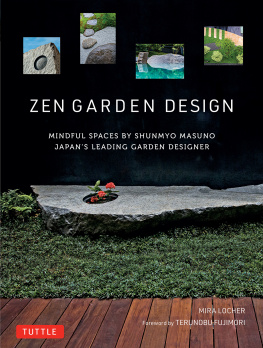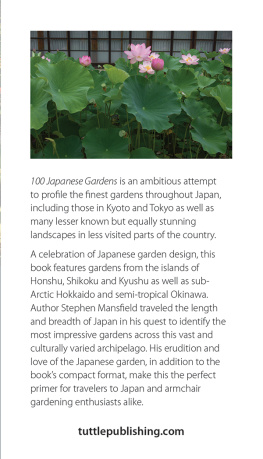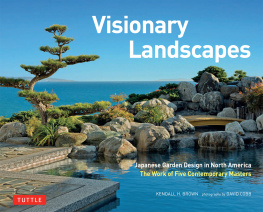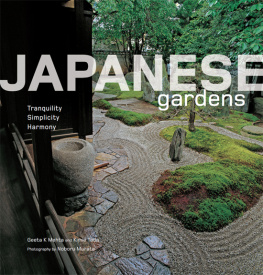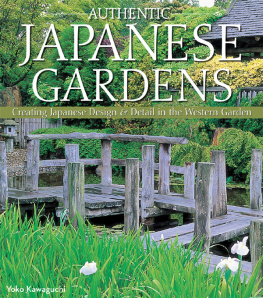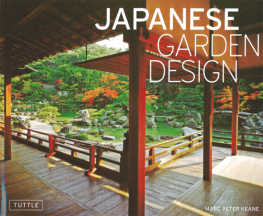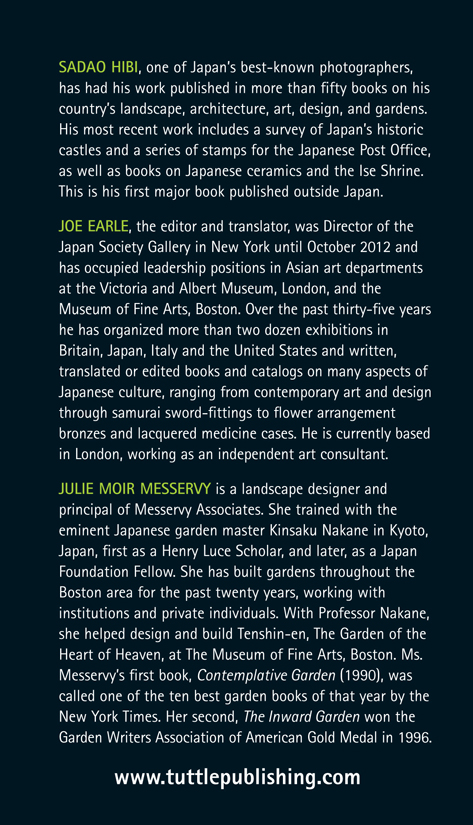Julie Moir Messervy (intro) - Infinite Spaces: The Art and Wisdom of the Japanese Garden (Based on the Sakuteiki by Tachibana No Toshitsuna)
Here you can read online Julie Moir Messervy (intro) - Infinite Spaces: The Art and Wisdom of the Japanese Garden (Based on the Sakuteiki by Tachibana No Toshitsuna) full text of the book (entire story) in english for free. Download pdf and epub, get meaning, cover and reviews about this ebook. year: 2013, publisher: Tuttle Publishing, genre: Children. Description of the work, (preface) as well as reviews are available. Best literature library LitArk.com created for fans of good reading and offers a wide selection of genres:
Romance novel
Science fiction
Adventure
Detective
Science
History
Home and family
Prose
Art
Politics
Computer
Non-fiction
Religion
Business
Children
Humor
Choose a favorite category and find really read worthwhile books. Enjoy immersion in the world of imagination, feel the emotions of the characters or learn something new for yourself, make an fascinating discovery.
- Book:Infinite Spaces: The Art and Wisdom of the Japanese Garden (Based on the Sakuteiki by Tachibana No Toshitsuna)
- Author:
- Publisher:Tuttle Publishing
- Genre:
- Year:2013
- Rating:5 / 5
- Favourites:Add to favourites
- Your mark:
Infinite Spaces: The Art and Wisdom of the Japanese Garden (Based on the Sakuteiki by Tachibana No Toshitsuna): summary, description and annotation
We offer to read an annotation, description, summary or preface (depends on what the author of the book "Infinite Spaces: The Art and Wisdom of the Japanese Garden (Based on the Sakuteiki by Tachibana No Toshitsuna)" wrote himself). If you haven't found the necessary information about the book — write in the comments, we will try to find it.
Based on classical Japanese writings, this Zen gardening book is full of insightful commentary and lush photographs.
Japanese gardens have long been admired for their capacity to improve on nature through impeccable design, detail, and composition: properties that elevate them from mere gardens to sacred spaces. The Sakuteiki, literally notes on garden design, by the eleventh-century courtier and poet Tachibana no Toshitsuna laid out the original principles that shaped the design of these gardens. A distillation of centuries of garden design, the Sakuteiki remains a vital influence for garden makers in Japan today.
Infinite Spaces pairs extracts from the Sakuteiki with inspiring images that beautifully illustrate the principles of this ancient work. Sadao Hibis superb photographs capture some of Japans best-known gardensfrom austere compositions in stone and gravel to richly planted landscapes. The photographs express the extraordinary beauty and diversity of one of the worlds most ancient and revered styles of gardening. Discover a treasure trove of practical advice and philosophical insight on building and maintaining pools, lakes, and streams; arranging stones for the most natural and harmonious effect; and designing water features and placing stones to welcome auspicious deities while excluding malevolent influences.
Japanese gardening topics include:
Principles of Garden Design
Pools and Lakes
Waterfalls
Streams
Trees and Mounds
Good and Evil
Stones
This timeless visual artistry of the gardens and the specific design techniques will inspire you to create magnificent garden sanctuaries in your own backyard.
Julie Moir Messervy (intro): author's other books
Who wrote Infinite Spaces: The Art and Wisdom of the Japanese Garden (Based on the Sakuteiki by Tachibana No Toshitsuna)? Find out the surname, the name of the author of the book and a list of all author's works by series.

